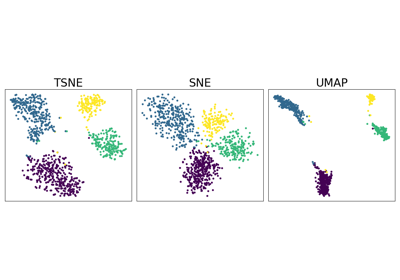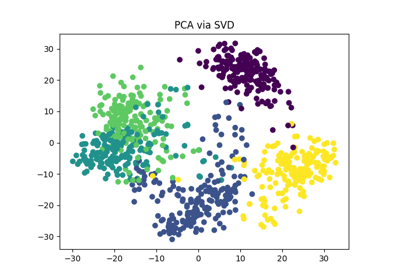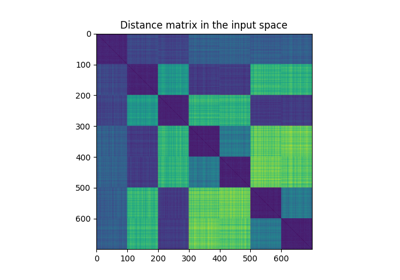DRModule#
- class torchdr.DRModule(n_components: int = 2, device: str = 'auto', backend: str | FaissConfig | None = None, verbose: bool = False, random_state: float | None = None, compile: bool = False, process_duplicates: bool = True, **kwargs)[source]#
Bases:
BaseEstimator,Module,ABCBase class for DR methods.
Each children class should implement the fit_transform method.
- Parameters:
n_components (int, optional) – Number of dimensions for the embedding. Default is 2.
device (str, optional) – Device to use for computations. Default is “auto”.
backend ({"keops", "faiss", None} or FaissConfig, optional) – Which backend to use for handling sparsity and memory efficiency. Can be: - “keops”: Use KeOps for memory-efficient symbolic computations - “faiss”: Use FAISS for fast k-NN computations with default settings - None: Use standard PyTorch operations - FaissConfig object: Use FAISS with custom configuration Default is None.
verbose (bool, optional) – Verbosity of the optimization process. Default is False.
random_state (float, optional) – Random seed for reproducibility. Default is None.
compile (bool, default=False) – Whether to use torch.compile for faster computation.
process_duplicates (bool, default=True) – Whether to handle duplicate data points by default.
- fit(X: ArrayLike, y: Any | None = None) DRModule[source]#
Fit the dimensionality reduction model from the input data.
- Parameters:
X (ArrayLike of shape (n_samples, n_features)) – or (n_samples, n_samples) if precomputed is True Input data or input affinity matrix if it is precomputed.
y (None) – Ignored.
- Returns:
self – The fitted DRModule instance.
- Return type:
- fit_transform(X: ArrayLike, y: Any | None = None) ArrayLike[source]#
Fit the dimensionality reduction model and transform the input data.
This method handles duplicate data points by default. It performs dimensionality reduction on unique data points and then maps the results back to the original data structure. This behavior can be controlled by the process_duplicates parameter.
- Parameters:
X (ArrayLike of shape (n_samples, n_features)) – or (n_samples, n_samples) if precomputed is True Input data or input affinity matrix if it is precomputed.
y (None) – Ignored.
- Returns:
embedding_ – The embedding of the input data in the lower-dimensional space.
- Return type:
ArrayLike of shape (n_samples, n_components)
- transform(X: ArrayLike | None = None) ArrayLike[source]#
Transform the input data into the learned embedding space.
This method can only be called after the model has been fitted. If X is not provided, it returns the embedding of the training data.
- Parameters:
X (ArrayLike of shape (n_samples, n_features), optional) – The data to transform. If None, returns the training data embedding. Not all models support transforming new data.
- Returns:
embedding_ – The embedding of the input data.
- Return type:
ArrayLike of shape (n_samples, n_components)
- Raises:
NotImplementedError – If the model does not support transforming new data.
ValueError – If the model has not been fitted yet.
Examples using DRModule:#

Neighbor Embedding on genomics & equivalent affinity matcher formulation



